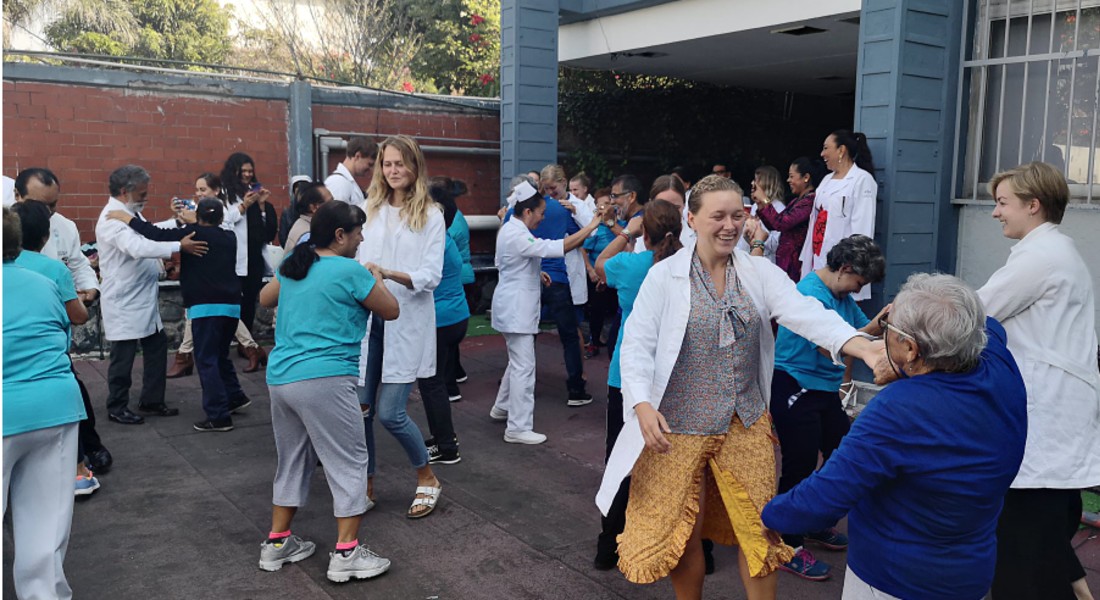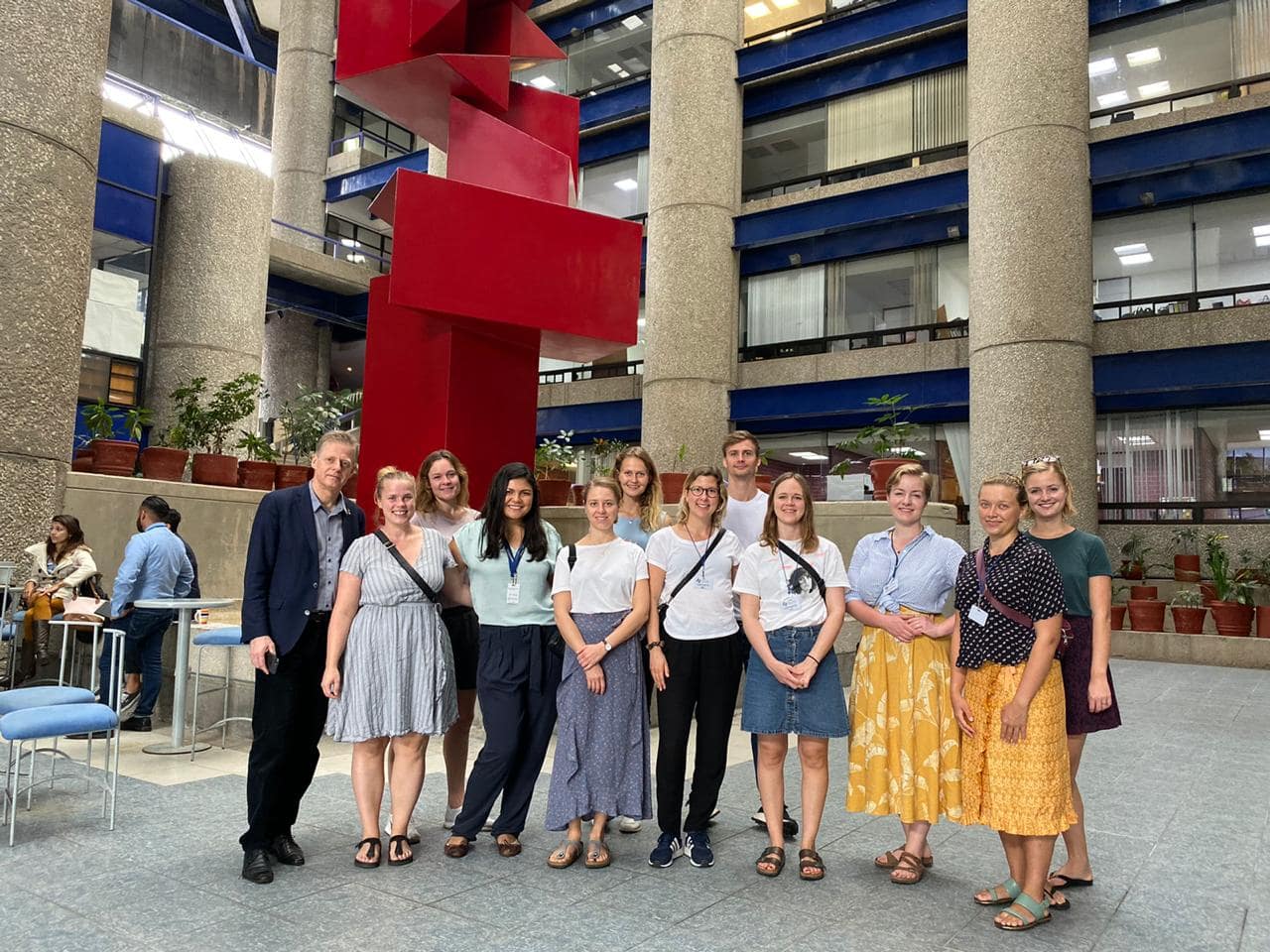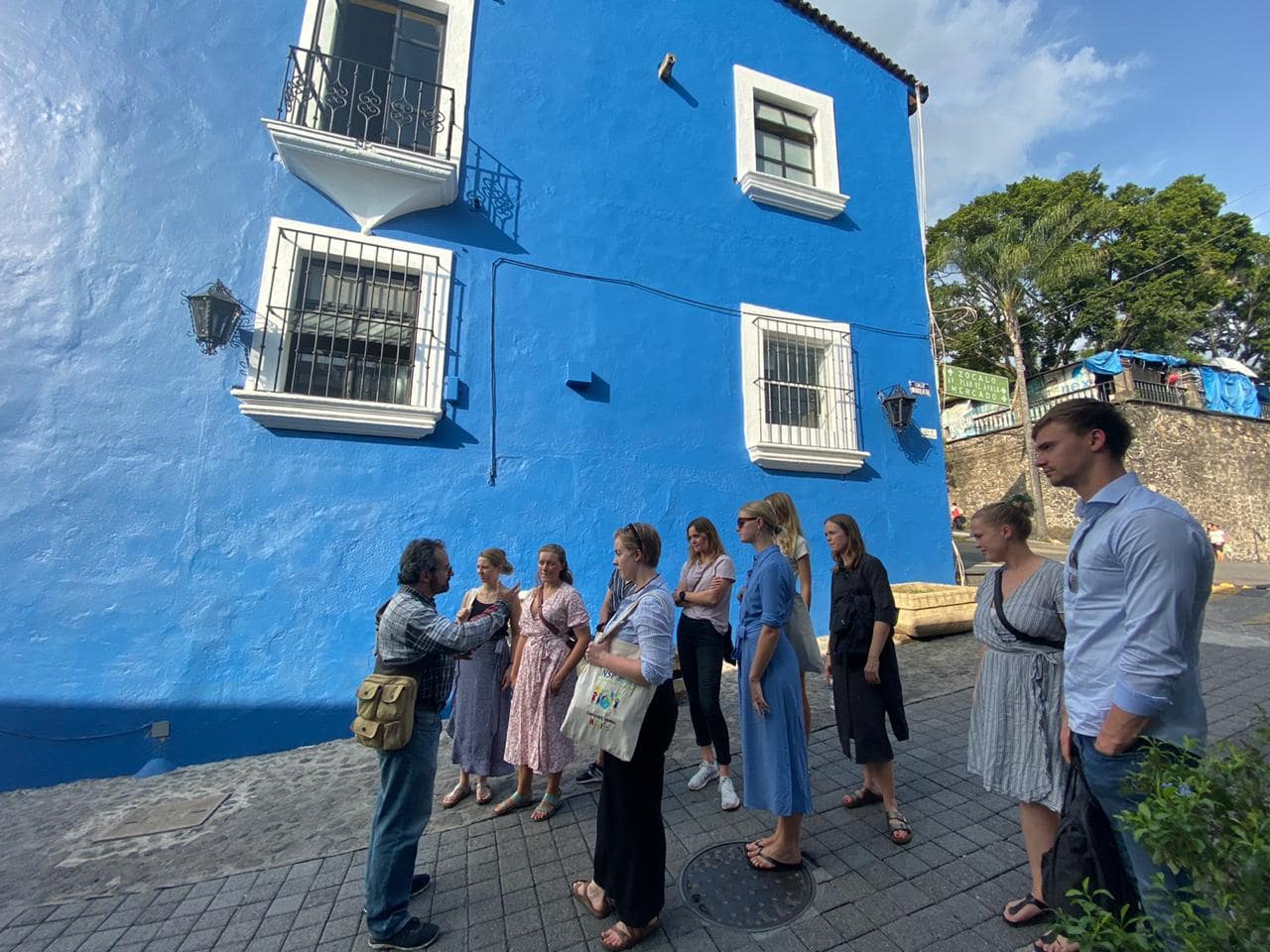Global Public Health in Mexico: Danish medical students’ meeting with the Mexican health system

As part of the elective course International Study Exposure – Global Public Health, 10 medical students from University of Copenhagen visited Mexico to gain an understanding of different contexts and causes of national disease burdens as well as to discuss public health strategy, interventions and related health care challenges in the context of socio-economic conditions and changes. The host was The National Institute for Public Health (INSP).
Text: Eibhlin Caimbeul / Pictures: Maja Lunøe Schiødt and Olivia Frost Lorentzen
Two course participants, Olivia Frost Lorentzen and Maja Lunøe Schiødt, both described how the course gave them a first-hand experience with the differences in health systems, policies and civil society’s role in the context of the non-communicable disease (NCD) burden - an area that they both felt lacked in their medical studies.
Challenges of the Mexican health system in the context of NCD’s
Olivia explains how going to Mexico made her realise, that so many aspects of society play a role in the burden of NCD’s:
“When I arrived, I realised that Mexico isn’t actually designed for people to walk around but that is rather designed for people to drive around in cars. Light exercise through every-day tasks is something that Dr. Bente Klarlund from University of Copenhagen focuses a lot on in her research and lectured us about in the pre-departure course”.
Maja accordingly pointed to the visual differences in the accessibility to junk food and other obvious factors that influence the life-course exposure.
Olivia also explains how Mexico is especially interesting in the way their health system is providing differently for people from different socio-economic groups:
“The Mexican health system is very interesting in how they tackle different patient groups. This particular system makes it difficult for socially vulnerable people for multiple reasons”.
In relation to this, Maja explains how the Mexican health system’s greatest challenge in tackling NCD’s is, that it is not a universal health system but rather fragmented into different insurance types that vary depending on the profession of people: “this results in the programmes and interventions not being aligned”.
This insight in the different health systems is, according to Olivia, one of the main reasons why she decided to take this course:
“I took this course to learn more about Public Health in general, but also to understand other types of health systems than the Danish and experience this in real life”.

A Mexican hospital’s incentives for exercising
The Mexican hospitals, on the other hand, really know how to nudge people into exercising in ways that you wouldn’t come across in Denmark. While visiting a hospital in Mexico specialised in diabetes, Olivia stumbled upon an initiative that engaged patients into exercising:
“Suddenly, we’re standing in a courtyard full of 50/60-year-old people who are having a dancing lesson in a type of Salsa/Zumba. It was extremely fun to see how the hospital acknowledged how important exercise is, and that they had realised that the way to get Mexican people exercising, is through music. We ended up joining the dancing which was also extremely fun!”

“Oh midwives... you only have that in the countryside”
There is also a huge difference in which type of health care professionals you make use of in different settings in Mexico compared to Denmark. When Olivia visited a nursing school, she asked specifically about the role of midwives.
“They answered: Oh midwives... you only have that in the countryside. They are simply viewed as women who possess know-how about giving birth”
She furthermore explained how there is tradition for using doctors for everything in Mexico instead of making use of nurses or other health care professionals.
“In Denmark we use midwives for pre-care and childbirth, and a nurse for postnatal care. In Mexico they use doctors for all three stages, which is, if you think about it, a lot more expensive”.
Because it is so expensive, a lot of pregnant women won’t be seen to before they are giving birth, which is especially problematic in Mexico where the burden of NCD’s is high: “Because there are so many risk factors, you also know that a lot of women have risk-prone pregnancies, which there could be done a lot about if only they would be seen by a health care professional at an earlier stage”.
Gaining new perspectives
Maja recommends this course if you want to travel and at the same time explore another country with a specific focus point that you wouldn’t otherwise have: “It is a different and really exciting way to explore another country when having a specific focus point in mind”. Maja expressed how this has changed her way of thinking: “You cannot avoid gaining a new perspective on things”.
The course is only for postgraduate medical students at the University of Copenhagen. Students must have completed the summer course in Global Health Challenges before they can attend.
See the course description for International Study Exposure – Global Public Health here.
